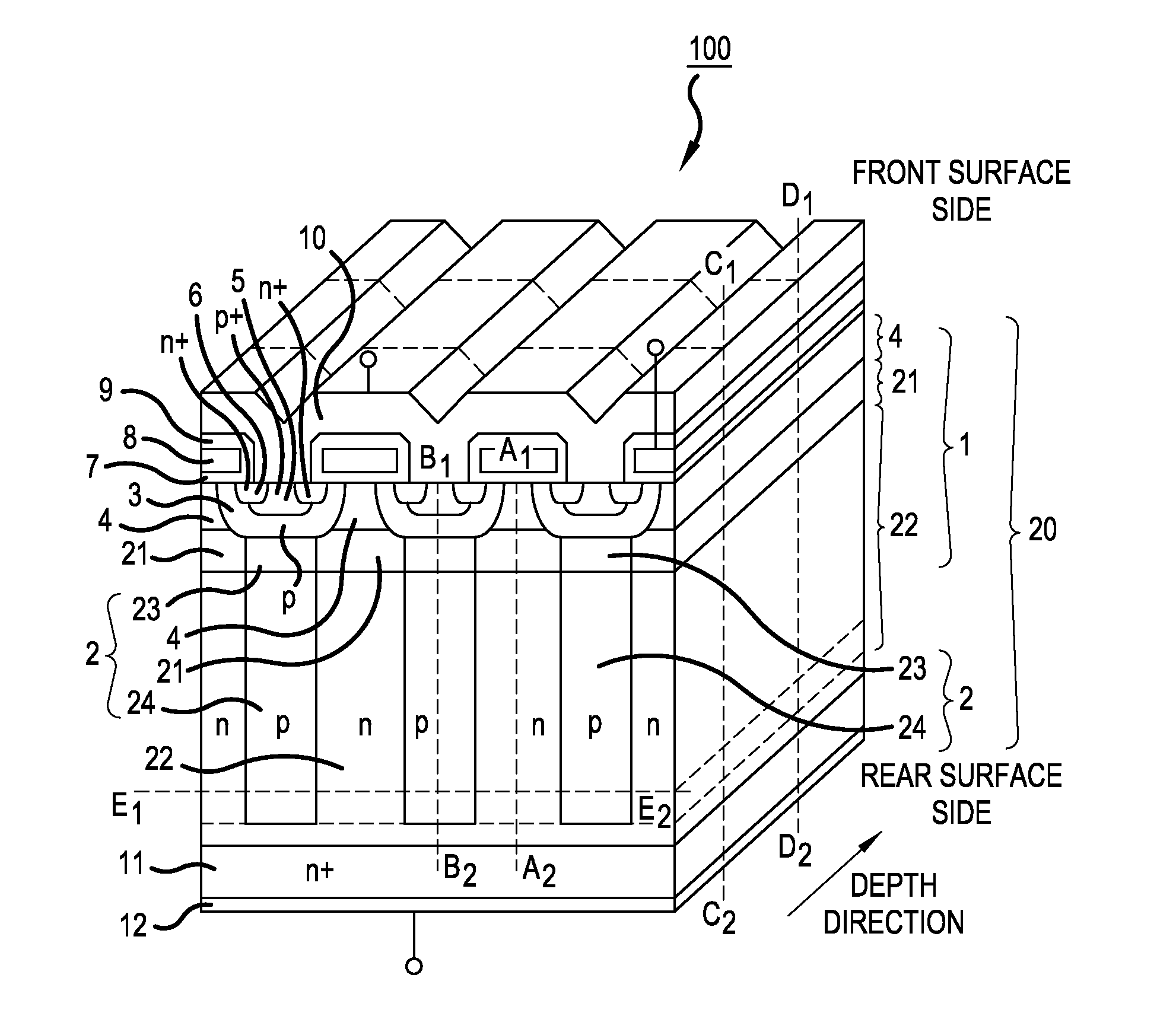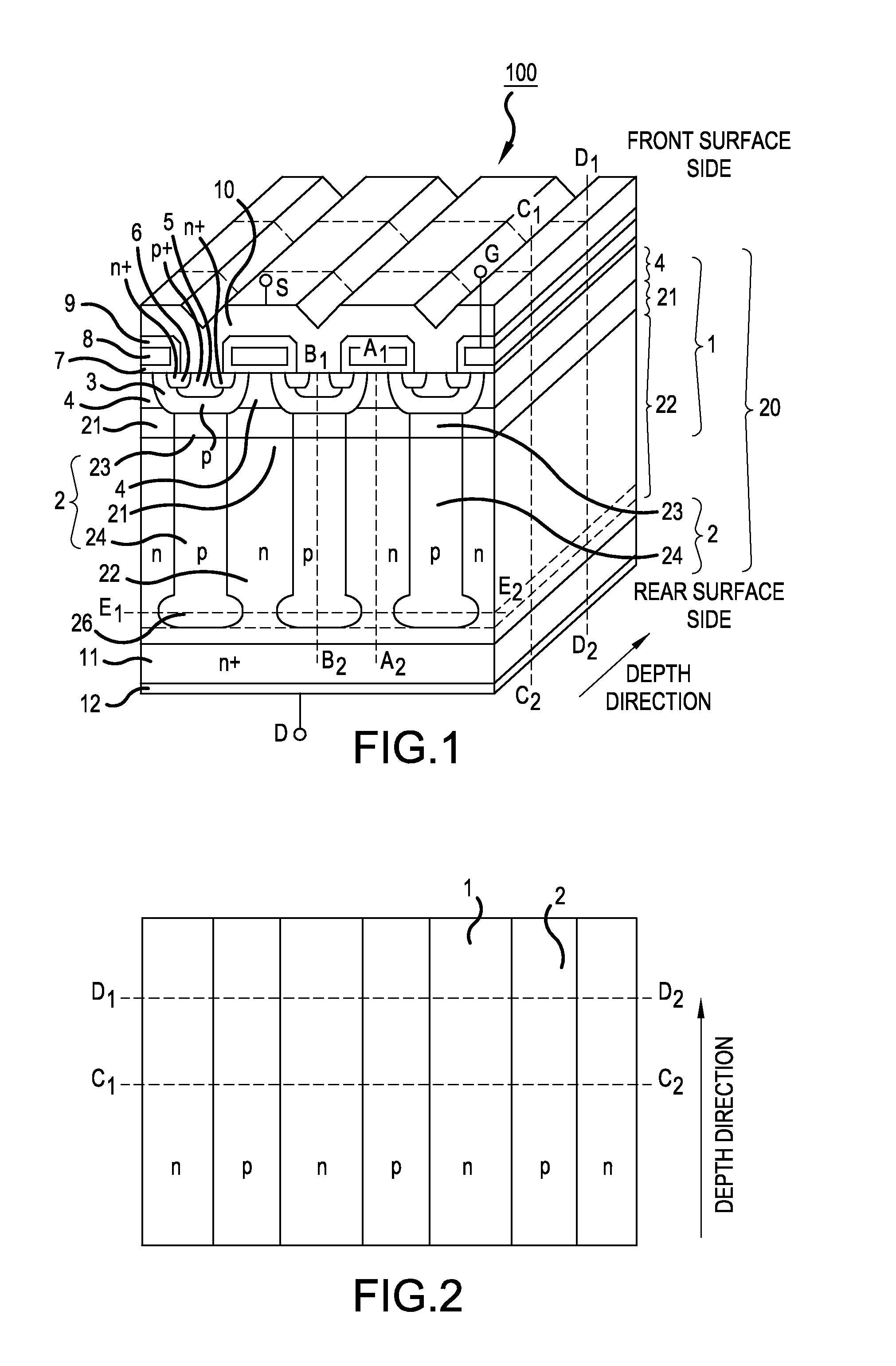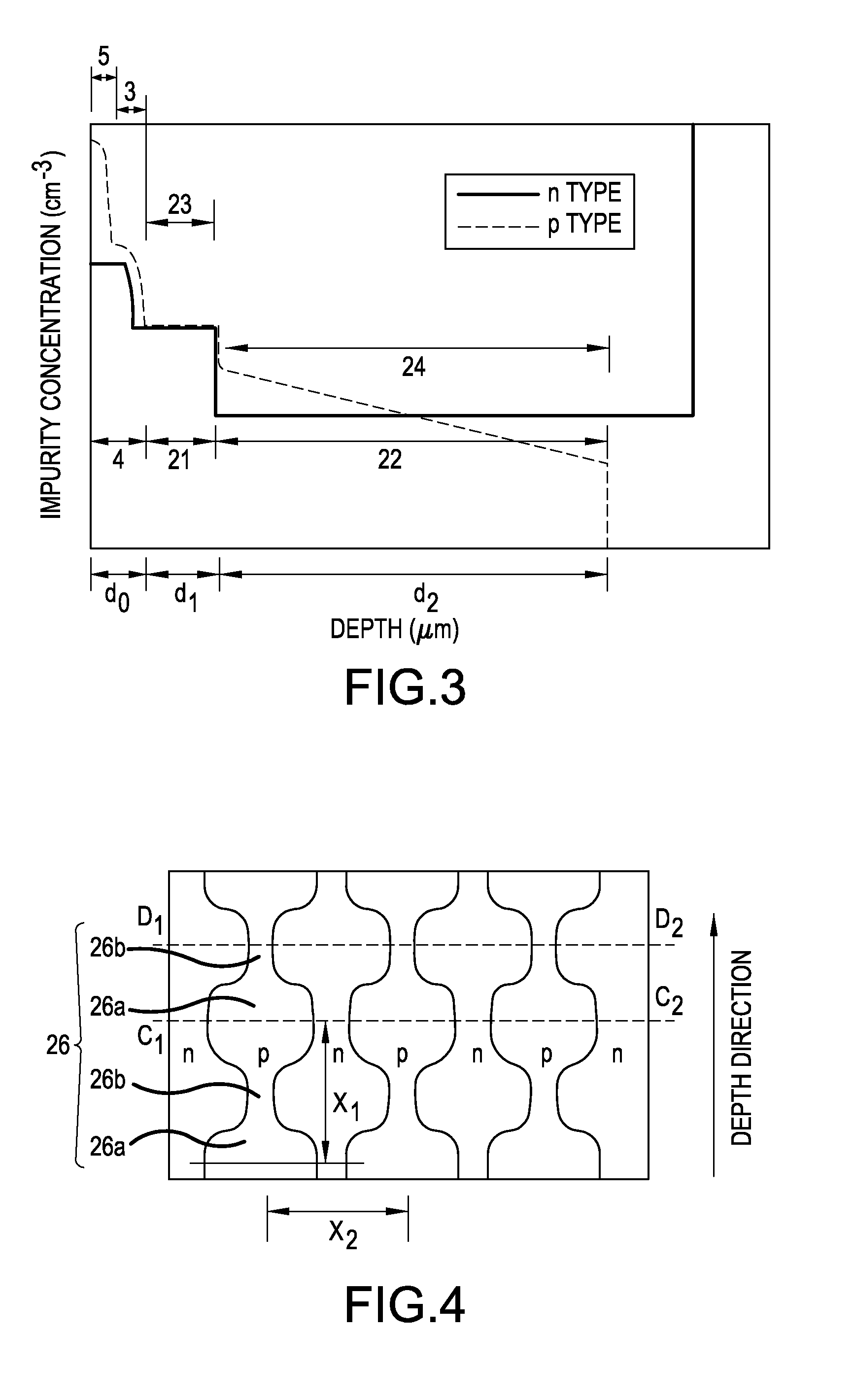Semiconductor device and semiconductor device fabrication method
a semiconductor device and semiconductor technology, applied in the direction of semiconductor devices, basic electric elements, electrical equipment, etc., can solve the problems of increased on-resistance, increased electrical connection loss, and difficulty in increasing on-resistance and breakdown voltage, so as to improve avalanche resistance and reduce the area ratio of parasitic bipolar transistor operation.
- Summary
- Abstract
- Description
- Claims
- Application Information
AI Technical Summary
Benefits of technology
Problems solved by technology
Method used
Image
Examples
embodiment 1
[0041]A super junction MOSFET will be described as an example of a super junction MOS semiconductor device according to Embodiment 1 of the invention. FIG. 1 is a perspective view illustrating the structure of the super junction MOSFET according to Embodiment 1 of the invention. As illustrated in FIG. 1, in a super junction MOSFET 100 according to Embodiment 1, a MOS gate (metal-oxide film-semiconductor insulated gate) structure is provided on the first main surface (front surface) side of a semiconductor substrate (an epitaxial substrate which will be described below) and an n+ drain layer 11 and a drain electrode 12 are provided on the second main surface (rear surface) side. The front surface structure of a planar MOSFET including the MOS gate structure includes, for example, a p base region 3, an n-type surface region 4, a p+ contact region 5, an n+ source region 6, a gate insulating film 7, a gate electrode 8, an interlayer insulating film 9, and a source electrode 10.
[0042]A p...
embodiment 2
[0063]Next, a super junction MOSFET will be described as an example of a super junction MOS semiconductor device according to Embodiment 2 of the invention. FIG. 7 is a perspective view illustrating the structure of the super junction MOSFET according to Embodiment 2 of the invention. A parallel pn layer 20 of a super junction MOSFET 100 according to Embodiment 2 has a laminated structure of a plurality of epitaxial layers. In Embodiment 2, an n-type region 1 and a p-type region 2 forming the parallel pn layer 20 are formed as follows. Whenever an n-type epitaxial layer is grown, p-type impurity ions, such as boron ions, are implanted into the n-type epitaxial layer in order to form the p-type region 2 and the introduced p-type impurities are diffused to selectively form the p-type region 2 in the n-type epitaxial layer. A portion of the n-type epitaxial layer in which the p-type region 2 is not formed is the n-type region 1. For example, the parallel pn layer 20 having a pn junctio...
PUM
 Login to View More
Login to View More Abstract
Description
Claims
Application Information
 Login to View More
Login to View More - R&D
- Intellectual Property
- Life Sciences
- Materials
- Tech Scout
- Unparalleled Data Quality
- Higher Quality Content
- 60% Fewer Hallucinations
Browse by: Latest US Patents, China's latest patents, Technical Efficacy Thesaurus, Application Domain, Technology Topic, Popular Technical Reports.
© 2025 PatSnap. All rights reserved.Legal|Privacy policy|Modern Slavery Act Transparency Statement|Sitemap|About US| Contact US: help@patsnap.com



